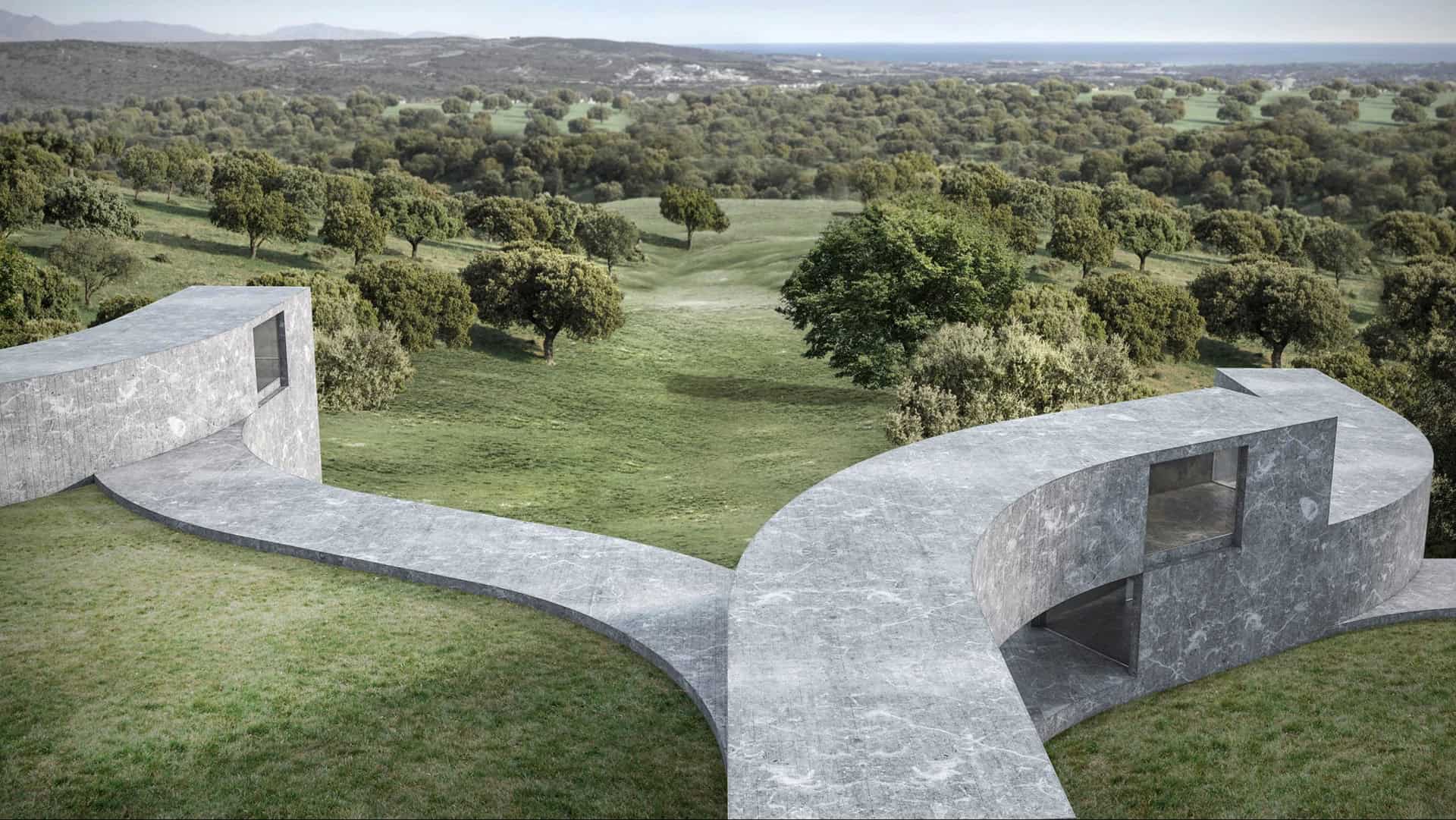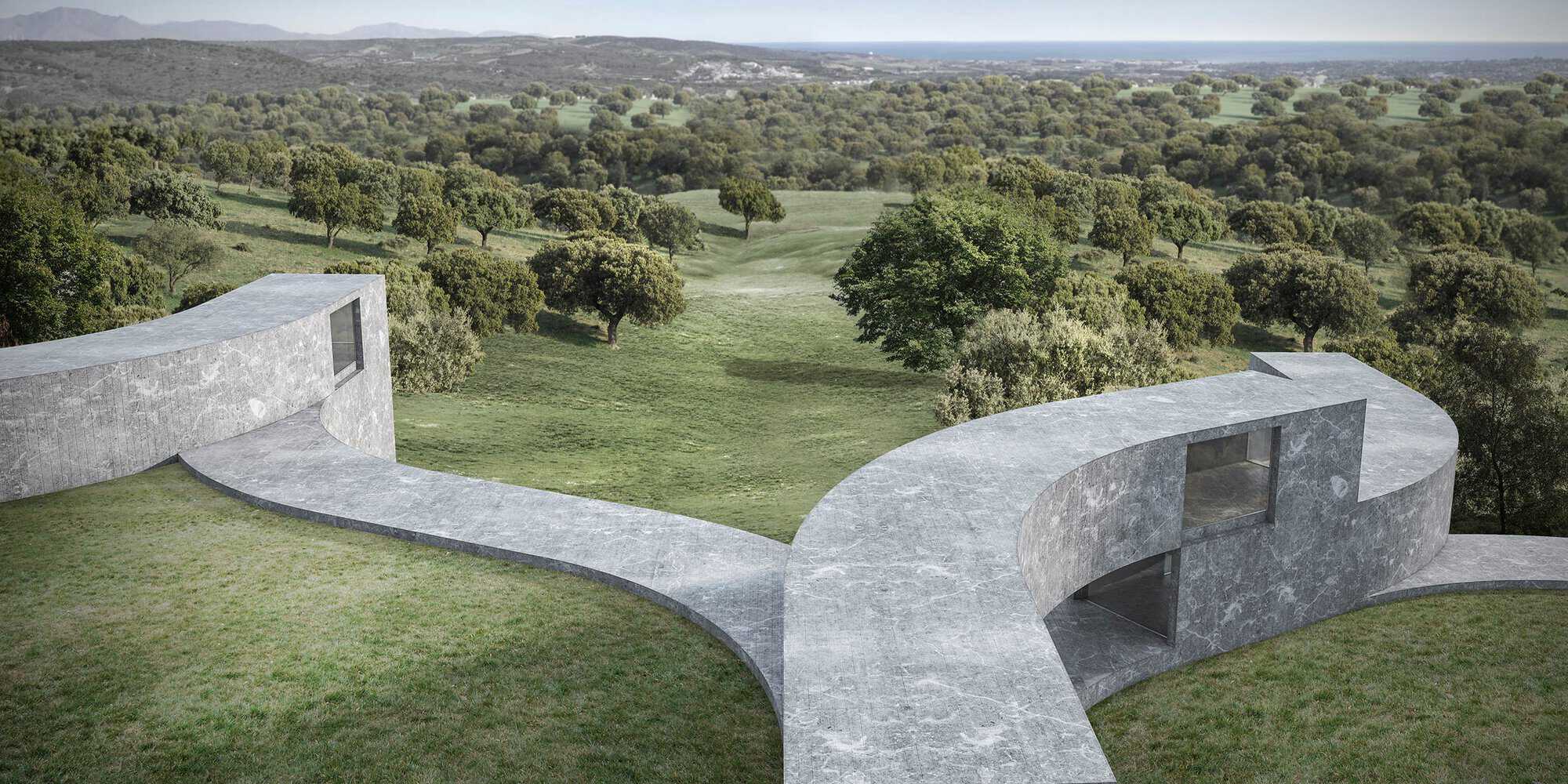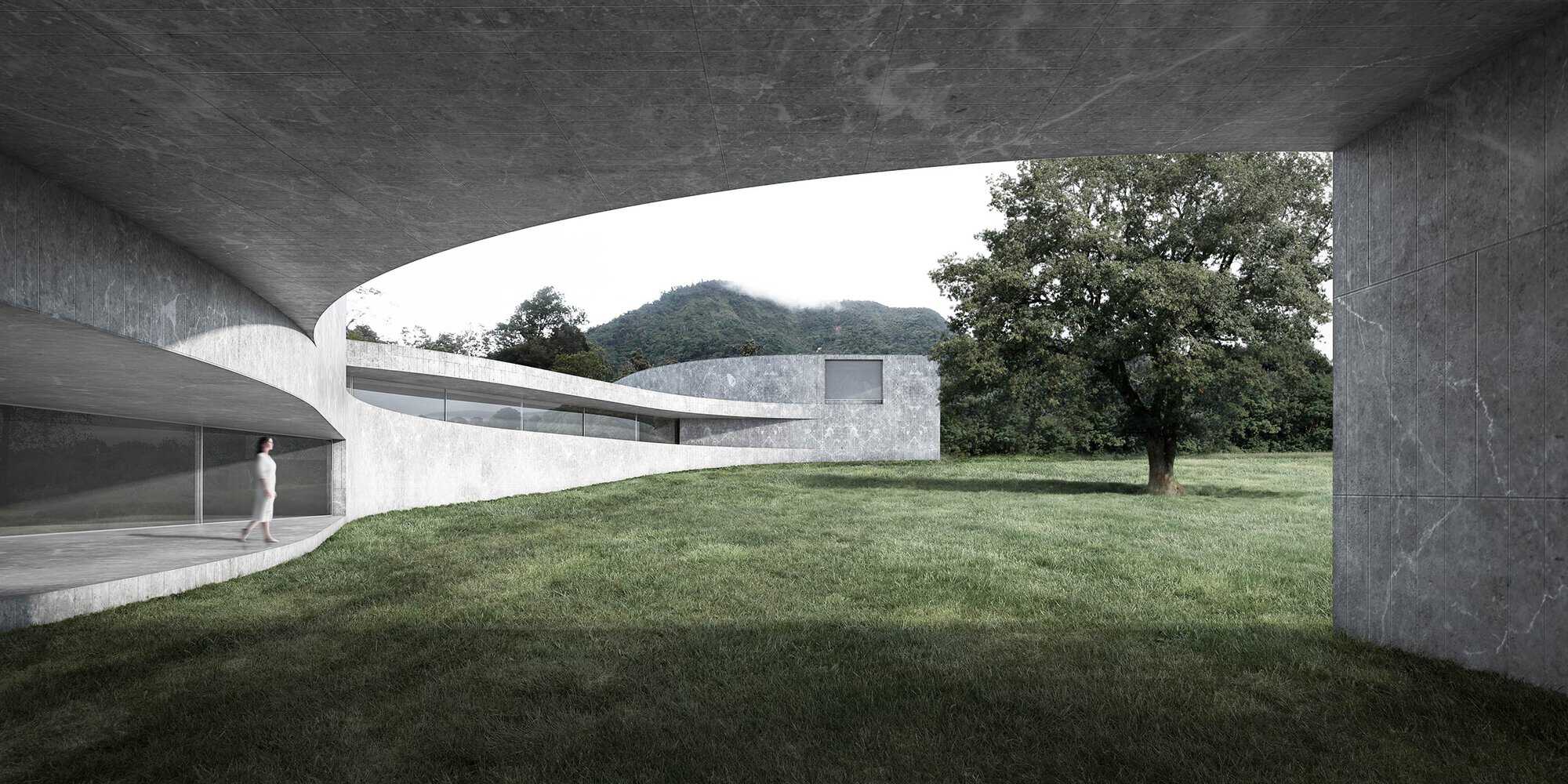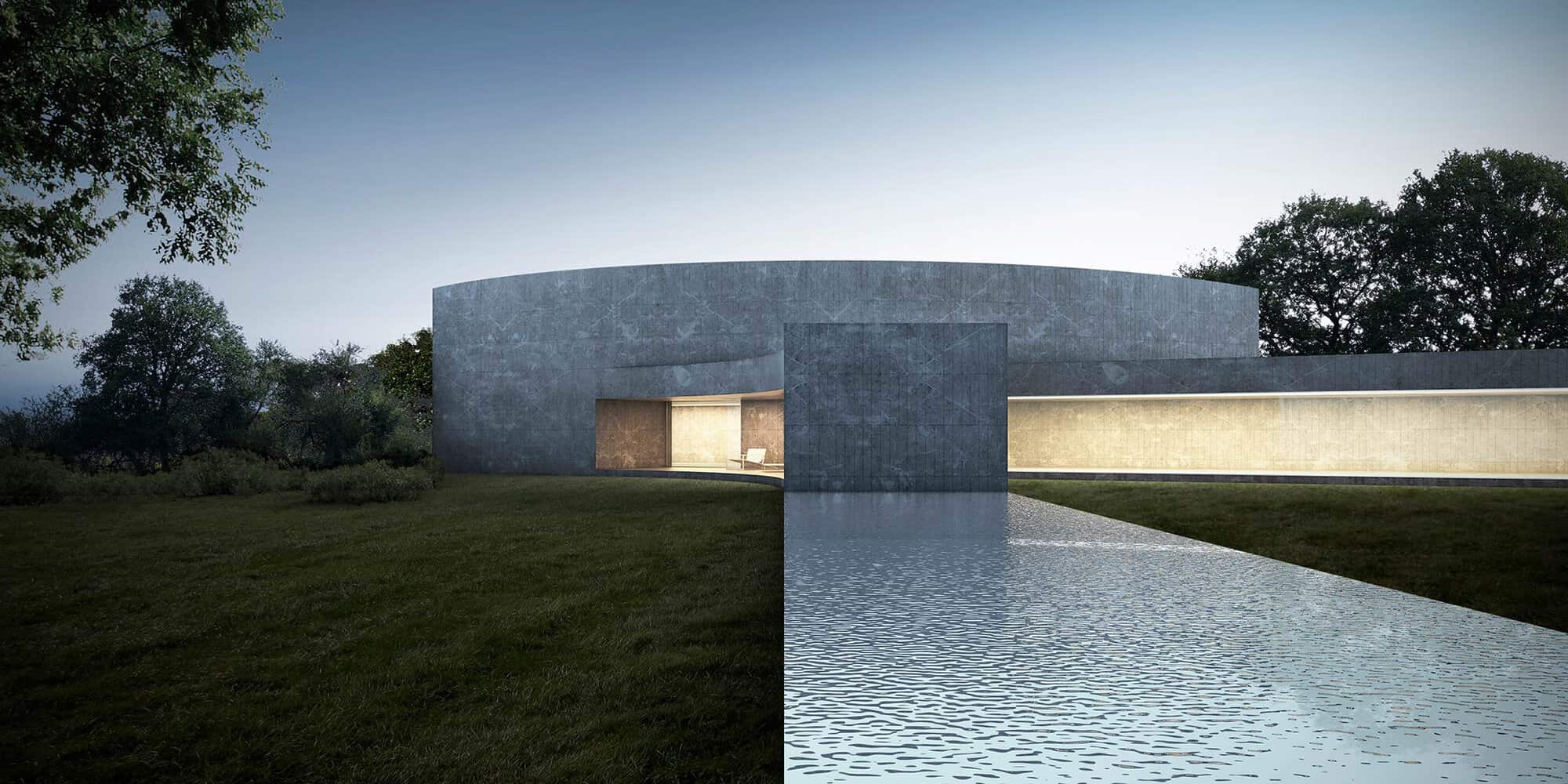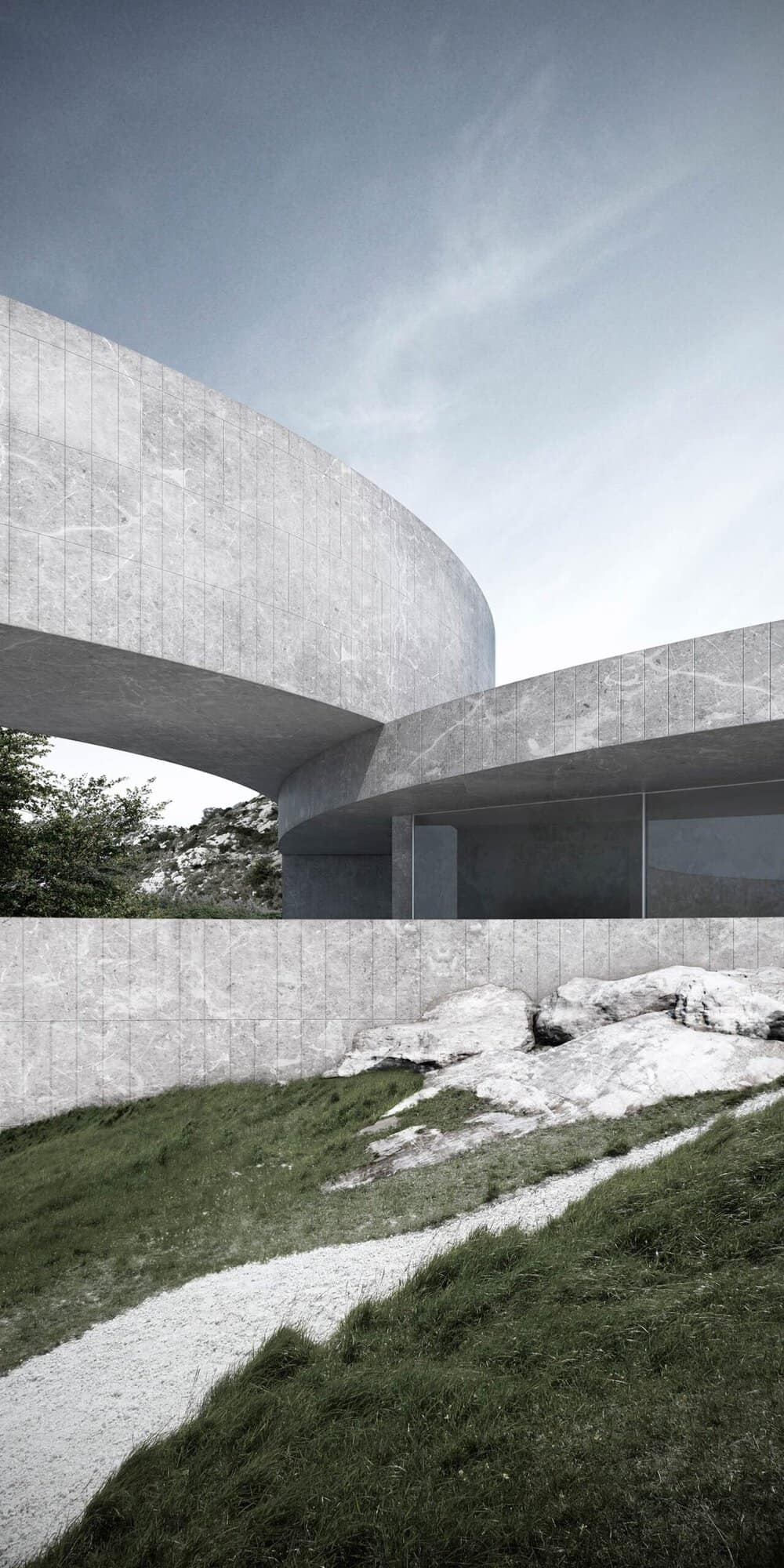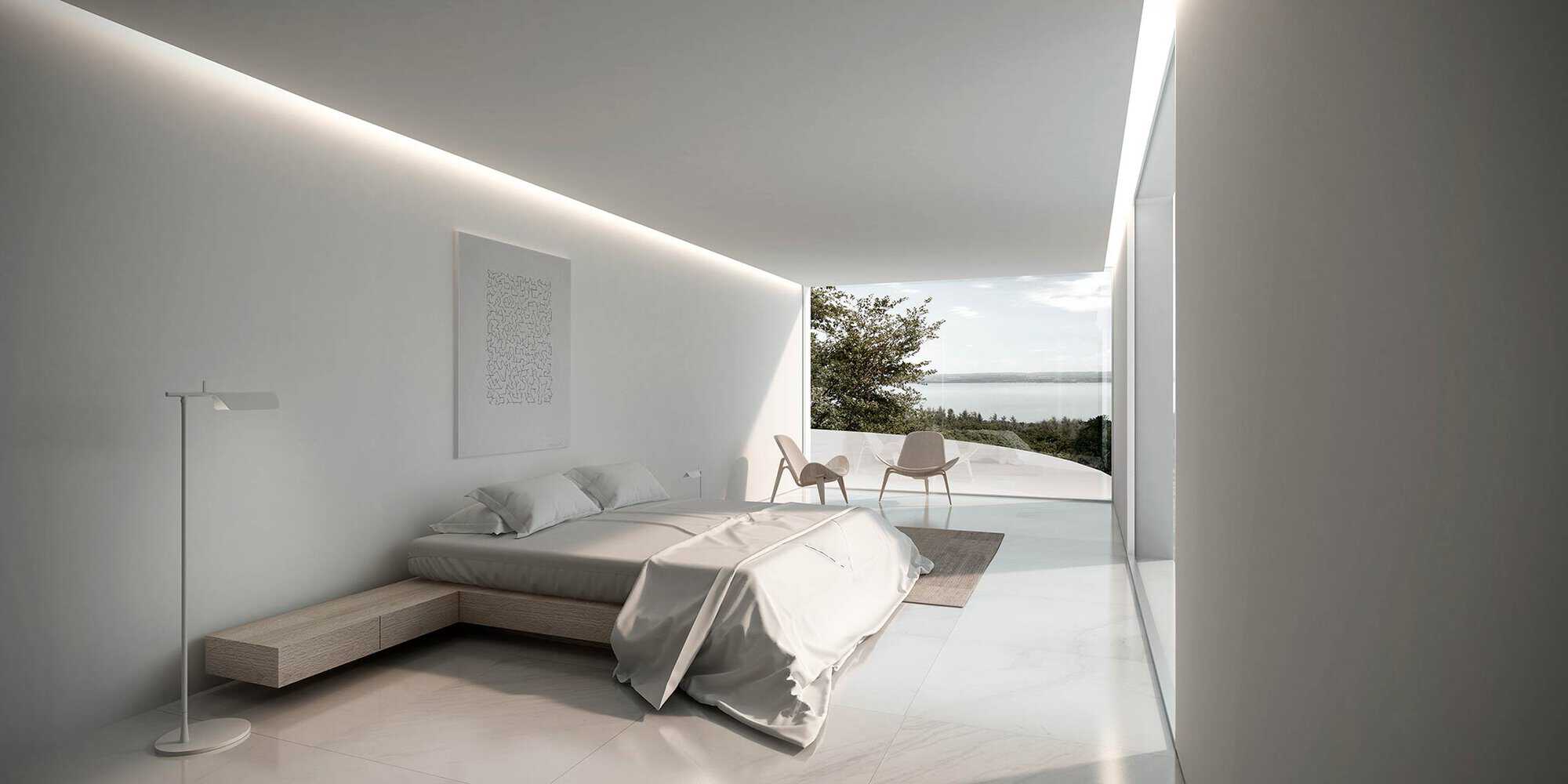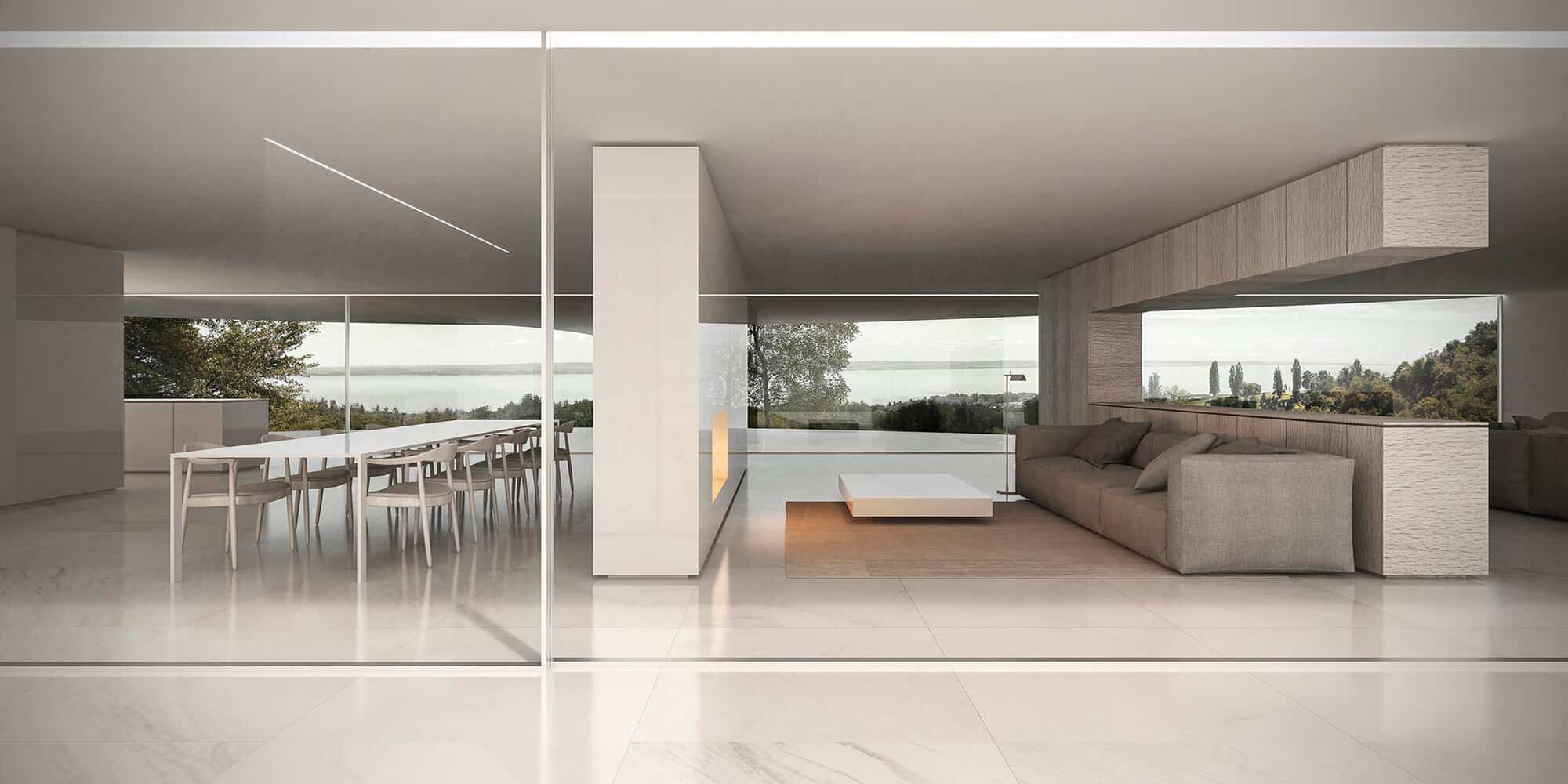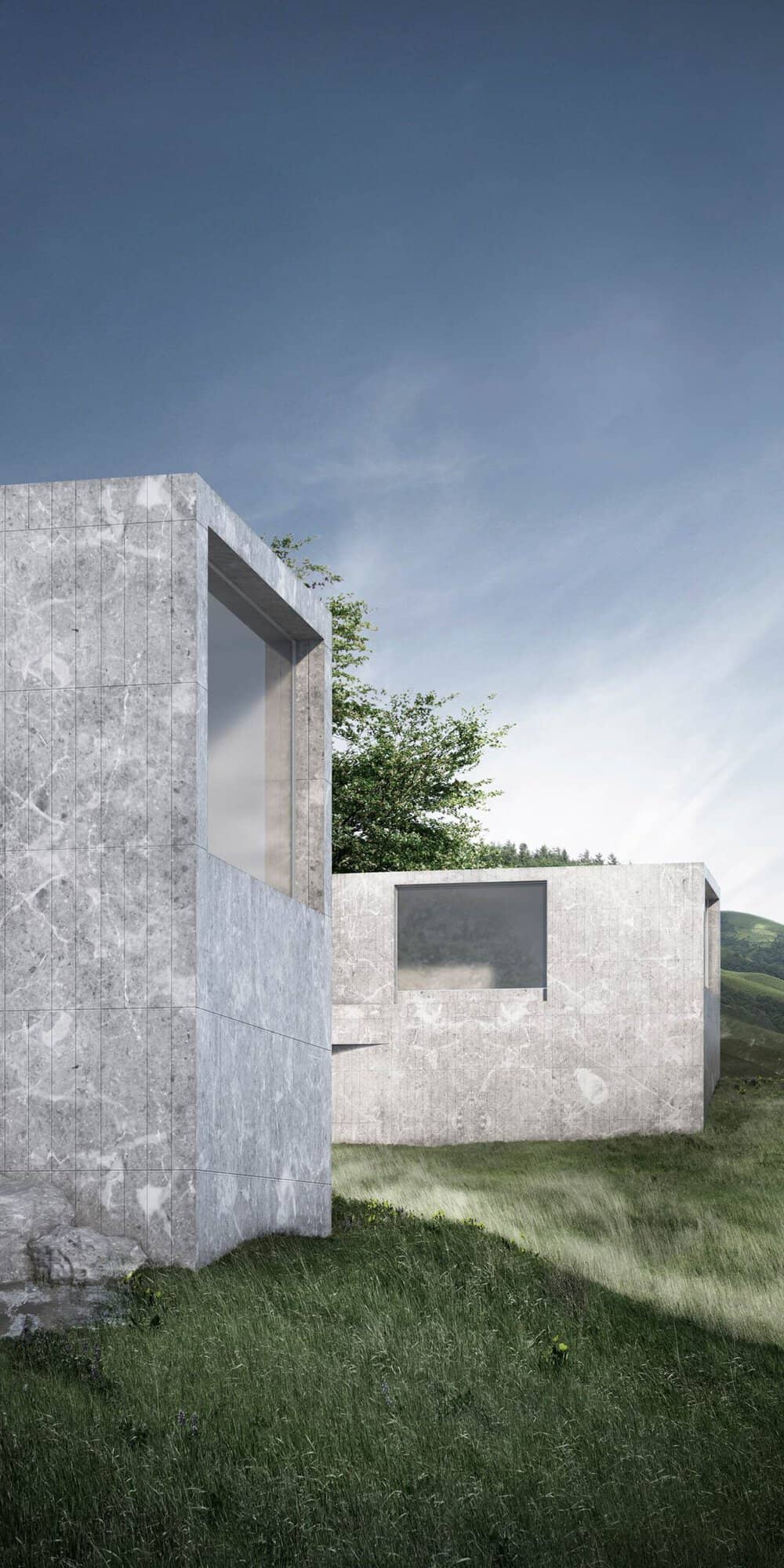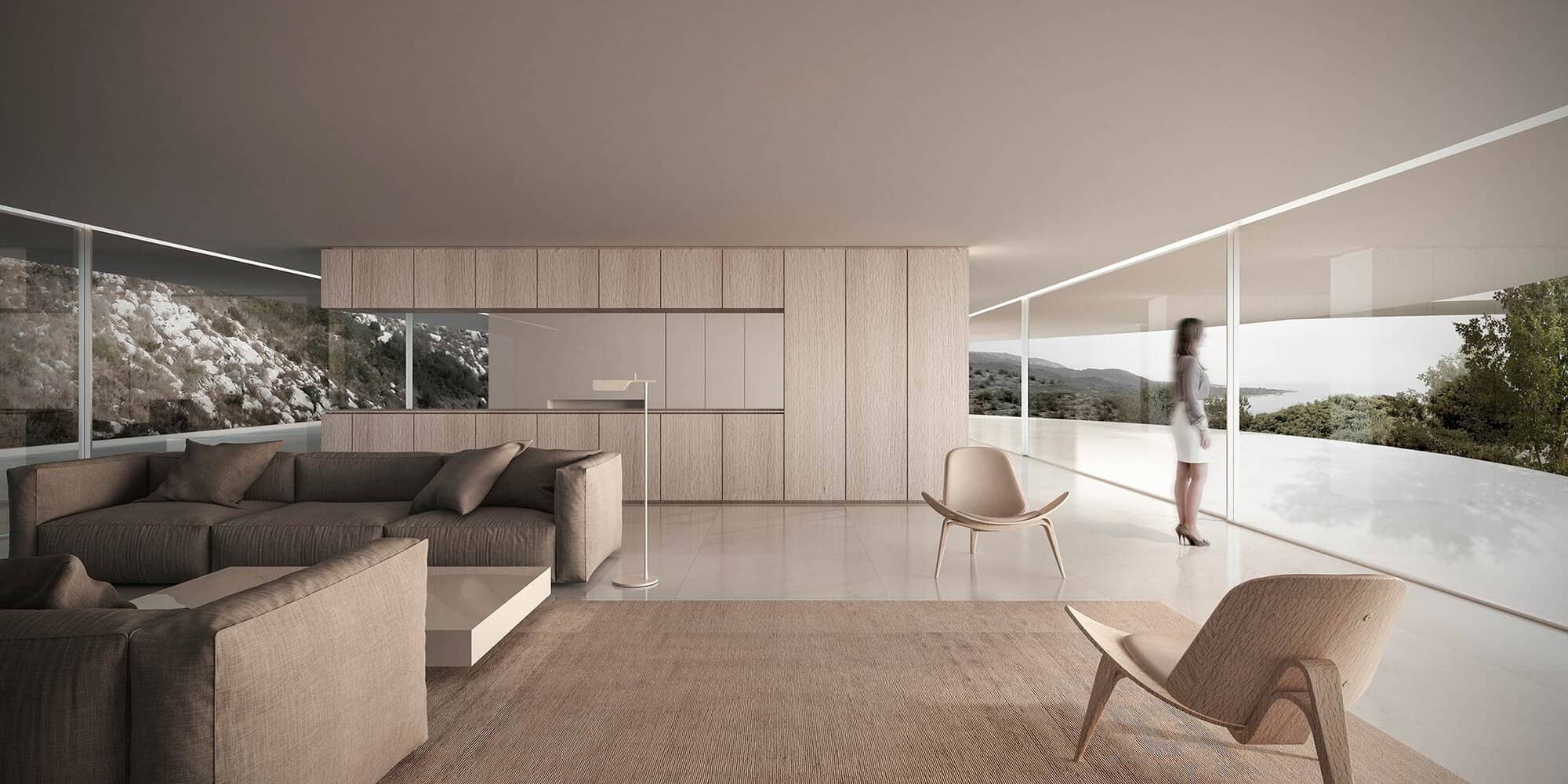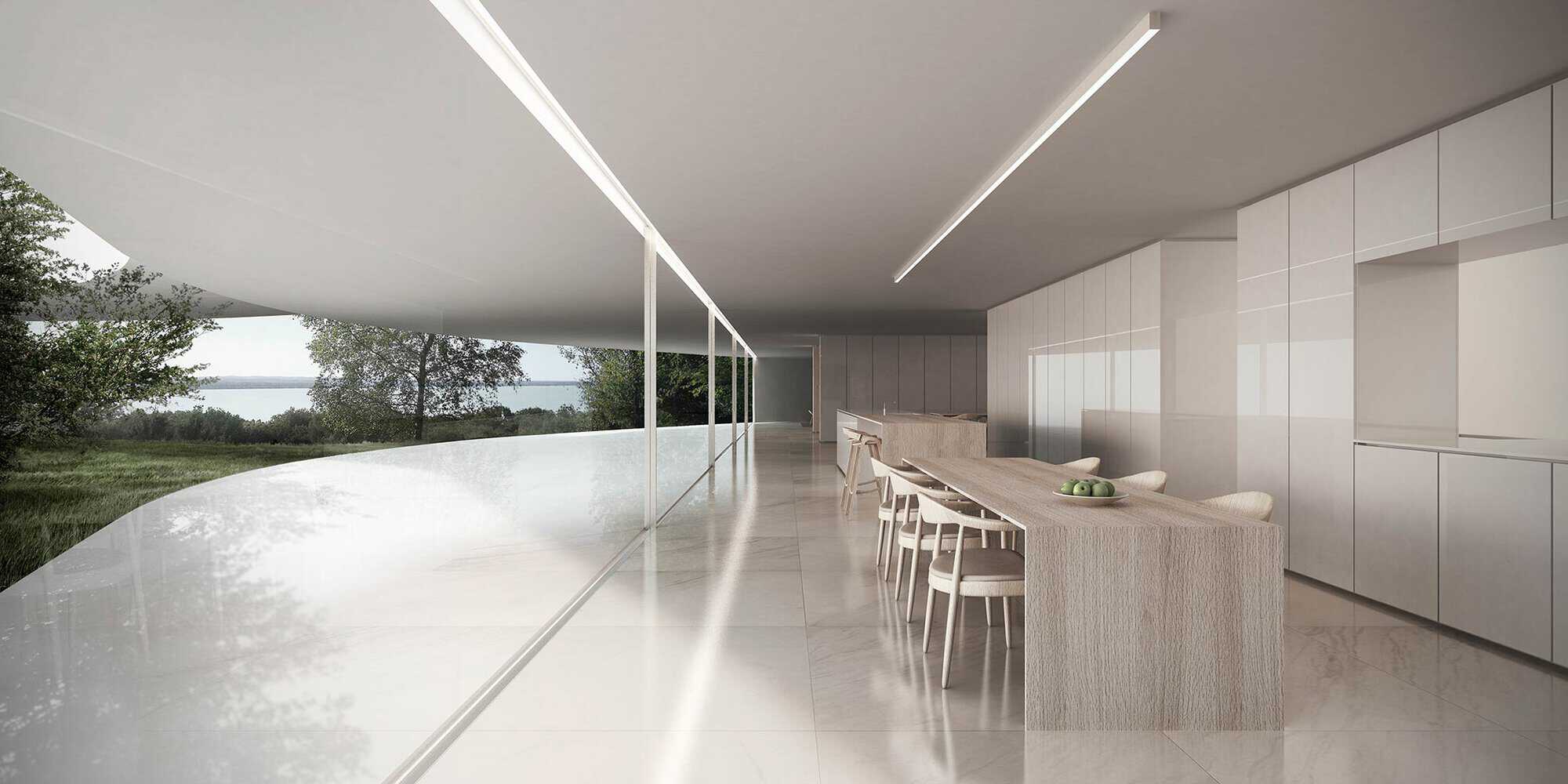Nestled within the breathtaking Grazalema mountain range, the House of Seven Gardens emerges not merely as a structure but as an intrinsic part of the geological landscape.
This architectural marvel is enveloped by towering cork and holm oaks, reminiscent of nearby natural formations, such as the famed cave of the two doors.
Rather than standing apart from nature, the house integrates seamlessly with its surrounding elements, asserting itself as a living part of the land.
Here, the boundaries between architecture and geology blur, inviting visitors to view the home as an organic extension of the mountainous environment.
1. Embracing the Elements
The home’s design intricately responds to its climatic surroundings, effectively shielding residents from the high humidity winds that sweep in from the Atlantic.
The Grazalema mountain range constructs a protective barrier, ensuring that the house remains a sanctuary amidst the region’s meteorological peculiarities.
In one of Spain’s wettest zones, the architecture responds to rains that carve the earth over time, creating a narrative of resilience and adaptation.
This house doesn’t simply provide shelter; it becomes an embodiment of the relationship between human creativity and nature’s powerful forces.
2. A Landscape of Reflection
Positioned on a significant plot of land, the House of Seven Gardens boasts panoramic views that extend from the breathtaking Sierra Nevada all the way to the distant coast of Africa.
This broad perspective invites contemplation of the region’s unique geographical tapestry.
As the house rises from the earth, it frames breathtaking vistas, allowing inhabitants to experience the magnificence of the natural world on a daily basis.
With its diverse surroundings, the house not only serves as a private refuge but also a canvas that amplifies the beauty of its environment.
3. A Shift from the Ordinary
Distinguishing itself from local vernacular architecture, the House of Seven Gardens veers away from traditional whitewashed walls typical of the region.
Instead, it embraces serene shades reminiscent of natural stone, stimulating conversation not just about aesthetics, but about identity and context.
Rather than imposing its presence, it seeks to harmonize with the rocky textures and hues laid out by time and weather.
The structure, like the surrounding landscape, becomes an inviting exploration of resilience, history, and grace in a world often dominated by uniformity.
4. Seven Gardens of Serenity
At the heart of the project lies a sophisticated system of aggregation. This design principle enables the creation of seven distinctive outdoor spaces.
These gardens are more than just ornamental patches; they each mirror the unique portions of the natural environment that cradles them.
The division encourages exploration and interaction, with each garden presenting an opportunity to engage with the local flora and fauna.
Visitors are thus invited to roam and discover, blurring the lines between the cultivated and the wild, resulting in an experience steeped in wonder.
5. Nature’s Narrative
The landscapes crafted throughout the House of Seven Gardens tell a captivating tale.
Each outdoor space unfolds a different chapter, drawing heavily from the vegetation and geology that envelop them.
This poetic storytelling cultivates a sense of connection with the immediate environment.
The gardens evolve throughout the seasons, showcasing the dynamic nature of life, rooted in rain and resilience.
6. Fiction Meets Reality
The architecture cultivates a delicate interplay between nature and design, producing a narrative that transcends traditional structures.
The blurring of human and natural landscapes evokes a sense of limitless fiction, invoking imaginations and encouraging creativity.
It challenges residents to engage with their surroundings on a deeper level.
By encouraging exploration, this magical house enables all who visit to become part of a living fairytale.
7. Bridging Modernity and Tradition
The House of Seven Gardens serves as a bridge between modern architectural practices and the timeless beauty of its traditional surroundings.
While boldly contemporary in its design language, the house respects and honors the historical context from which it emerges.
The architectural dialogue fosters an appreciation for heritage while embracing innovation.
This balance allows the house to stand as a testament to the possibility of merging the old with the new, creating not just a home but a landmark of progressive thinking.
8. A Sustainable Vision
Further accentuating its brilliance, the House of Seven Gardens incorporates sustainable design principles, fashioned not merely for aesthetic appeal but also for environmental stewardship.
The emphasis on local materials reflects a commitment to preserving the region’s ecological integrity.
By cultivating a sustainable relationship with the land, the house becomes a functional testament to modern ecological sensibilities.
In this way, it inspires a vision of living harmoniously with nature, encouraging a thoughtful approach to building that resonates far beyond its immediate setting.
9. An Invitation to Explore
Ultimately, the House of Seven Gardens is more than a tourist destination; it’s an invitation to immerse oneself in a fantastical exploration of nature and architecture.
Each corner reveals new landscapes, ages old yet alive with contemporary relevance.
Such fusion cultivates a unique experience that transcends typical architectural encounters.
Visitors leave not just with memories of stunning views but with a renewed appreciation for the intricate relationship between humanity, design, and the enchanting world we inhabit.

